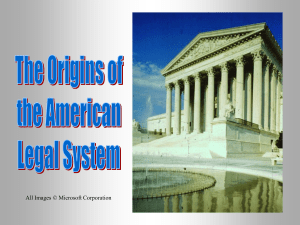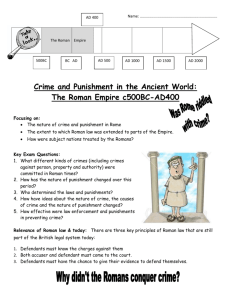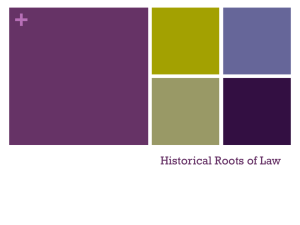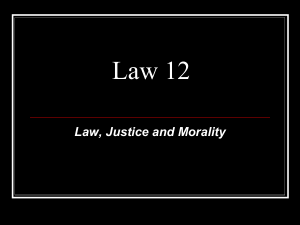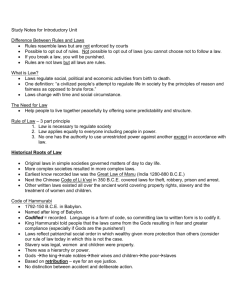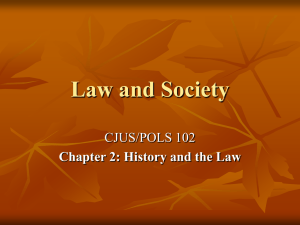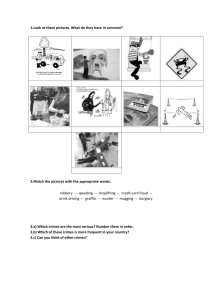Comparing Historical Sources of Law and Law Today
advertisement
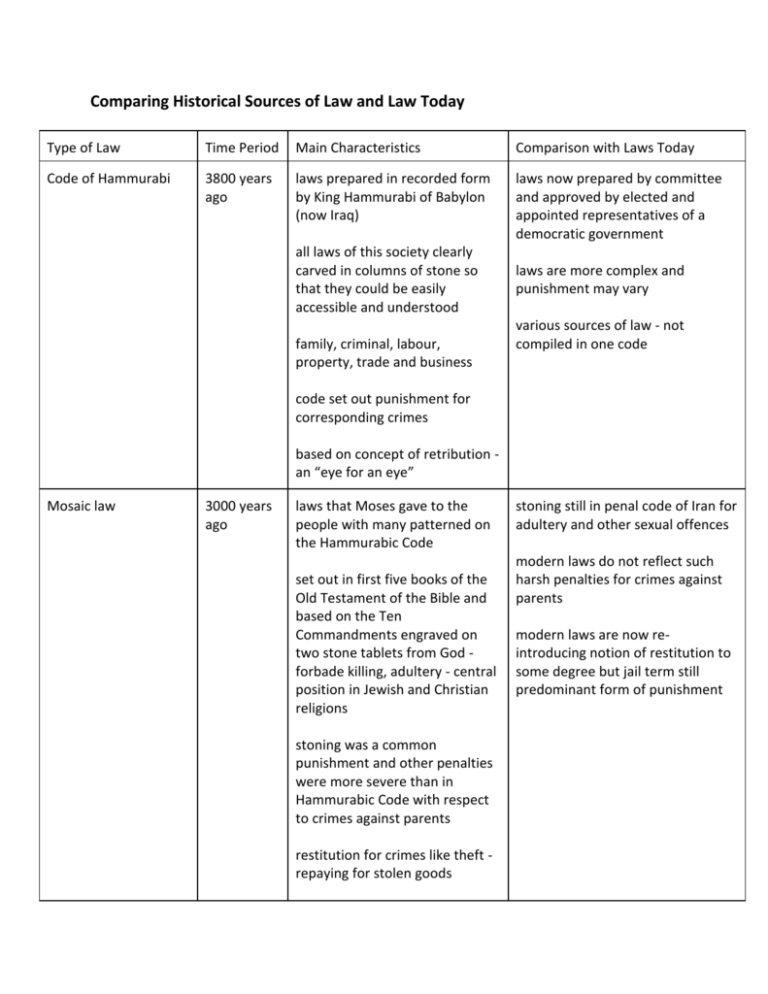
Comparing Historical Sources of Law and Law Today Type of Law Time Period Main Characteristics Comparison with Laws Today Code of Hammurabi 3800 years ago laws prepared in recorded form by King Hammurabi of Babylon (now Iraq) laws now prepared by committee and approved by elected and appointed representatives of a democratic government all laws of this society clearly carved in columns of stone so that they could be easily accessible and understood family, criminal, labour, property, trade and business laws are more complex and punishment may vary various sources of law - not compiled in one code code set out punishment for corresponding crimes based on concept of retribution an “eye for an eye” Mosaic law 3000 years ago laws that Moses gave to the people with many patterned on the Hammurabic Code set out in first five books of the Old Testament of the Bible and based on the Ten Commandments engraved on two stone tablets from God forbade killing, adultery - central position in Jewish and Christian religions stoning was a common punishment and other penalties were more severe than in Hammurabic Code with respect to crimes against parents restitution for crimes like theft repaying for stolen goods stoning still in penal code of Iran for adultery and other sexual offences modern laws do not reflect such harsh penalties for crimes against parents modern laws are now reintroducing notion of restitution to some degree but jail term still predominant form of punishment Roman law A.D. 100 until 5th century number of laws grew as Empire grew and they became more complex found it necessary to establish a profession devoted to legal matters basis of law for most of Europe except England similar in complexity due to complexity of Roman society necessary to have profession devoted to interpretation of laws 1000 years of Roman law were codified in Justinian Code, including past laws, legal opinions, and new laws passed by Emperor Justinian Napoleonic Code 1804 Napoleon Bonaparte revised French law which had been based on the Justinian Code of Roman Law basis of law of Quebec and State of Lousianna as well as the country of Thailand known as French Civil Code - not to be confused with general used term of “civil law” in rest of Canada Served as basis of much European law and came to other parts of the world with French colonists The Development of Canadian Law based on laws of France and England the two systems differ significantly - french law codified and English law is not (not written down) Some English law started to be written down but most is not - its existence is simply accepted through practice and precedent English law was developed by judges who met and discussed their decisions which became more and more consistent and these decisions became the basis of the law common to all people - the British Common Law Common law is based on rule by precedent - Stare decisis - “to stand by earlier decisions Law of Equity - available through King where applying precedent would be unfair - still recognized in Canadian law Precedent Law was important because it: recognized a degree of certainty introduced impartiality and consistency system of using earlier cases to convince judges of client’s argument - known as “case Law” Rule of Law - also comes from England - no one is above the law, including kings, and disputes are to be settled through the courts rather than by violent means and based on respect for the laws Statute Law also exists in Canada - originally passed by newly informed British parliament to undo injustice by strict adherence to precedents in common law Statute law and common law operate side by side with statutes and cases both being reported
